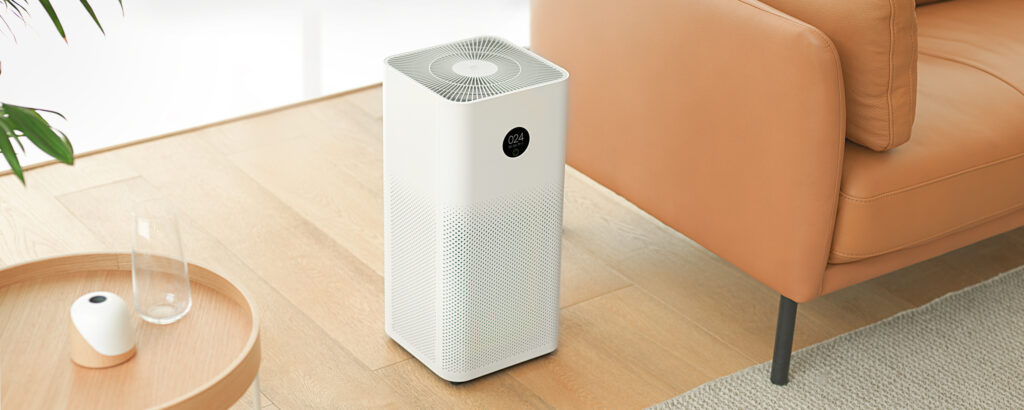According to World Health Organization (WHO) statistics, almost 99% of the global population is exposed to high levels of pollutants present in the air. Household combustion, vehicular emissions, industrial pollution, and forest fires are some of the major reasons attributing to the intensifying air pollution across the globe, leading to adverse public health concerns. Developments in air purification technologies seem like a practical and promising solution to counter pollutants while being indoors. Growing awareness about air pollution and rising incidences of respiratory ailments resulting from prolonged exposure to bad air quality have created a greater demand for air purifiers across residential and commercial sectors. Innovations and research by key players in the air purifier market have various options for the consumers to choose from, according to their preference and convenience.
HEPA air purifiers segment is expected to account for 48.21% of the global air purifier market share. Consumers prefer HEPA air purifiers as they are designed to remove 99.97% of the fine particles that are 3 microns in diameter. HEPA filters are effective in capturing dust, smoke, pollen, pet dander, wildfire, and more.
Smart air purifiers, the upgraded versions of traditional air purifiers, are registering the fastest growth as consumers now increasingly prefer devices that can be remotely operated on the app using smartphones. Some of the essential benefits of smart air purifiers include tracking and controlling indoor air quality according to the concentration of pollutants in the ambient air and facilitating users to change setting remotely via their smart devices. Coway, a leading player in the air purifier industry, recently introduced Airmega Icon, which comes with a robust 3-stage HyperCaptive filtration process, capable of removing 99.99% of ultra-fine particles, and its design perfectly blends with the home décor. In 2021, Dyson unveiled a new range of purification technology, Dyson Purifier Cool, Dyson Purifier Hot+Cool, and Dyson Purifier Cool Formaldehyde, to deliver clean air while providing cooling or heating. Thus, investments by the market players to expand their product portfolio and improve the air purification technologies as per the customers’ expanding needs are expected to support the smart air purifier market growth.
In recent years, consumer inclination towards compact size and portable air purifiers has been growing to increase the accessibility of air purifiers in the outdoor environment and enhance ease of convenience. From travel mug-sized cleaners to plasma purifiers, market players are launching purifiers that are smaller, smarter, and more efficient and effective than ever. With continued research and development initiatives and technological advances, newer models of portable air purifiers are expected to mark their entry into the market. Innovative product offerings by the market players and the rising personal disposable income of the population are expected to impact the growth of portable air purifier sales positively.

Download Free Sample Report@ https://www.techsciresearch.com/sample-report.aspx?cid=3073
During the COVID-19 pandemic, the sales of air purifiers surged in the United States, and companies ran out of stock within weeks. Recommendations instituted by government agencies to cope with the virus, such as improving air quality and ensuring proper ventilation, led to an urgent demand for air cleaners and purifiers. However, social distancing measures resulted in the temporary ban on visiting commercial spaces and educational institutions, which impacted the overall sales of air purifiers in the country. Lack of product awareness among consumers, misleading claims, and cheap alternatives to air purifiers might present some challenges to the market growth during the forecast period.
Recently, US President Joe Biden launched Clear Air in Buildings Challenge that requires owners and operators of buildings and commercial spaces such as schools and universities to adopt key strategies to enhance air quality, making air filtration improvements to keep the occupants safe. In 2021, the German government announced a maximum subsidy amount of EUR500,000 per location for installing air purification units at schools and daycare centers to ensure a good learning atmosphere, free from aerosols and fine dust. More such initiatives and funding by regulatory authorities and government bodies could boost the growth of the air purifiers market in the coming years. Moreover, alarming levels of pollution in some Asian countries such as China and India and greater awareness of air purifiers among the population in the region are anticipated to contribute to the air purifiers market growth.
According to the TechSci Research report on “Global Air Purifier Market By Filter Type (HEPA & Activated Carbon, Ion & Ozone, Electrostatic Precipitators, HEPA & Activated Carbon + Ion & Ozone, HEPA, Activated Carbon and Others), By End User (Residential, Commercial and Industrial), By Region, Competition, Forecast & Opportunities, 2027”, the global air purifier market is anticipated to grow at a CAGR of 13% throughout the forecast period, 2027. The market growth can be attributed to the growing respiratory disorders, especially among children and geriatric population. Besides, rising number of product innovations and improving air filter availability are some of the factors contributing to the market growth.
Contact
Mr. Ken Mathews
708 Third Avenue,
Manhattan, NY,
New York – 10017
Tel: +1-646-360-1656
Email: [email protected]
Website: https://www.techsciresearch.com
